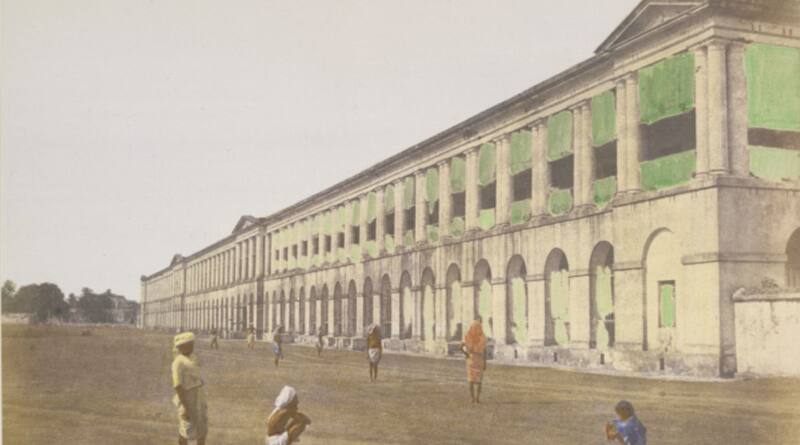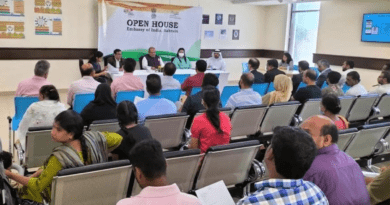The Epic 1857 Revolt Now Revisited Courtesy Bengal’s Cricket.
Bengal’s Chinsurah Cricket Match: A Fascinating Link To The 1857 Revolt And Colonial Resilience
In modern-day India, sports-centric columns have become integral to mainstream news outlets. However, the landscape of sports journalism was notably different during the 19th century. Traditional sports found limited space in prominent newspapers of that era, strongly emphasising hunting, fishing, and horse racing. Among the newspapers, The Bengal Hurkaru, a weekly publication that later transformed into a daily, emerged as a significant English newspaper in Calcutta during the 19th century.
During his PhD research at the British Library in London, Sarbajit Mitra delved into the digitised archives of the Bengal Hurkaru and unearthed intriguing insights. The newspaper featured a dedicated column called “The Sporting Gazette,” highlighting the significance of sports reporting early on. Cricket matches and horse races were prominently covered, reflecting the sport’s growing popularity in Bengal.
Mitra’s research shed light on a notable cricket match that took place in 1856 in Chinsurah, involving a team of Bengali students from Krishnagar pitted against the 6th Dragoon Guards, a regiment embroiled in the 1857 great insurrection. The accounts from The Hurkaru indicated the presence of regular matches between the Calcutta Cricket Club and combined teams comprising former students from various British universities.
The newspapers of the 19th century painted a nuanced picture of the sporting landscape, revealing the multifaceted nature of athletic pursuits during that era. The reports provided a glimpse into colonial society’s engagement with sports, reflecting the evolving dynamics of power and cultural exchange. Mitra’s analysis underscored the significance of these historical accounts in understanding the socio-cultural dynamics of colonial Bengal and the role of sports in shaping identity and community cohesion.
One of the pivotal highlights of Mitra’s research was the detailed examination of the cricket match between the 6th Dragoon Guards and the college team from Krishnagar. The game served as a sporting spectacle and encapsulated the complex interplay of social dynamics and colonial encounters. Through meticulous scrutiny of match reports and historical narratives, Mitra was able to reconstruct the record of this intriguing encounter, shedding light on the aspirations, struggles, and accomplishments of the individuals involved.
The participation of Indian students in the cricket match against the 6th Dragoon Guards signified a moment of assertion and empowerment, challenging the prevailing norms and stereotypes of the time. Mitra’s research illuminated the agency of the Indian participants, highlighting their determination to excel in a sport initially introduced by the British colonial rulers. This act of sporting defiance served as a subtle form of resistance, subtly challenging the dominant colonial narrative and asserting the cultural identity of the Indian populace.
Moreover, Mitra’s findings revealed the profound impact of cricket on fostering camaraderie and unity among diverse communities, transcending the barriers of race, class, and ethnicity. The cricket match became a platform for cultural exchange and mutual understanding, facilitating interactions between the British regiment and the local Indian students. This spirit of sportsmanship and camaraderie laid the foundation for a shared sporting culture that transcended the boundaries of colonial hierarchies, fostering a sense of mutual respect and admiration.
The cricket match at Chinsurah exemplified the transformative power of sports, transcending its recreational value to become a potent tool for social integration and cultural exchange. Mitra’s extensive research illuminated the historical significance of this sporting event. It underscored the enduring legacy of cricket in shaping the social and cultural fabric of colonial Bengal.
The enduring legacy of the cricket match continued to resonate within the annals of Indian sporting history, serving as a testament to the resilience and determination of the Indian populace to reclaim their cultural identity and heritage. Mitra’s comprehensive research provided valuable insights into the historical evolution of sports in Bengal. It highlighted the transformative power of sports in fostering social cohesion, cultural resilience, and collective empowerment within the colonial context.
The cricket match at Chinsurah stood as a poignant symbol of resilience and defiance, embodying the spirit of unity and camaraderie that transcended the confines of colonial hierarchies and power dynamics. Mitra’s pioneering research opened new avenues for understanding the role of sports in shaping cultural narratives and fostering a sense of community identity within the intricate tapestry of colonial Bengal. Mitra enriched the discourse on colonial history through his meticulous analysis and interdisciplinary approach. She highlighted the enduring legacy of sports as a catalyst for social change and cultural empowerment.
The narratives of the cricket match at Chinsurah served as a powerful reminder of the transformative impact of sports in challenging colonial prejudices and fostering a sense of cultural pride and identity among the Indian population. Mitra’s scholarly contribution not only celebrated the achievements of the Indian players but also emphasized the enduring legacy of their sporting excellence in shaping the trajectory of Indian sports and fostering a sense of collective pride and resilience within the colonial context.
Through an exploration of archival records, historical narratives, and cultural analysis, Mitra’s research shed light on the transformative impact of sports in fostering a sense of belonging and community resilience among diverse populations. The cricket match at Chinsurah stood as a poignant symbol of unity and defiance, embodying the enduring spirit of a society striving to carve its identity and legacy amidst the challenges of colonial rule and cultural hegemony.




